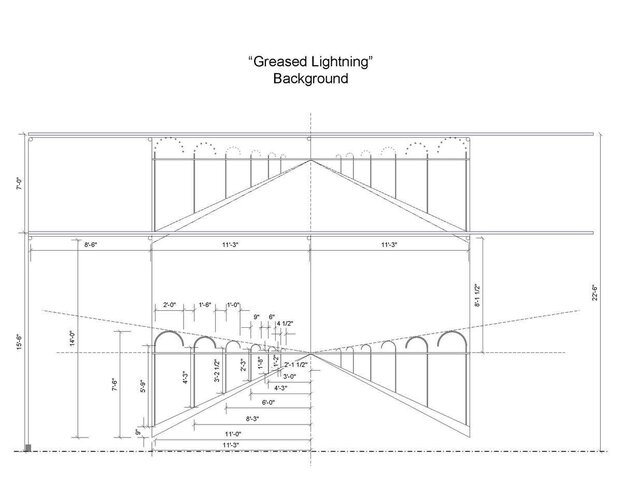urban79
Active Member
Here's the situation:
I'm the musical director for a production of Grease. As the person with the most (recent) theatre experience, I'm taking on a lot of design roles for the show. Part of my set design for the street scene with Greased Lightning is for a flying piece representing street lights in forced perspective.
Fortunately, I don't have to build the piece - I have a high school design class that is willing to take on the project. I gave the teacher the vision and let him come up with a plan. He's looking at building it as a large flying flat (5, 4X7 lauan faced flats, with sockets installed for the street lights).
My first question is: is there anything with this scenario that would concern you, pitfalls to avoid, etc? While it's not my job to build it, I will insist that it's done correctly (and by correctly I mean safely).
Second, would anyone have any ideas/sources for covers that would resemble street lights to be installed over the fixtures?
I have a feeling there will be many more panicked posts in the next six weeks - we're a little behind!
Thanks everybody!
Chris
I'm the musical director for a production of Grease. As the person with the most (recent) theatre experience, I'm taking on a lot of design roles for the show. Part of my set design for the street scene with Greased Lightning is for a flying piece representing street lights in forced perspective.
Fortunately, I don't have to build the piece - I have a high school design class that is willing to take on the project. I gave the teacher the vision and let him come up with a plan. He's looking at building it as a large flying flat (5, 4X7 lauan faced flats, with sockets installed for the street lights).
My first question is: is there anything with this scenario that would concern you, pitfalls to avoid, etc? While it's not my job to build it, I will insist that it's done correctly (and by correctly I mean safely).
Second, would anyone have any ideas/sources for covers that would resemble street lights to be installed over the fixtures?
I have a feeling there will be many more panicked posts in the next six weeks - we're a little behind!
Thanks everybody!
Chris



